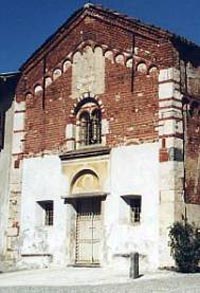 |
| Ferraris return |
| Time line Ferraris |
| Ferraris engines |
| Publications |
| Documents |
| Chronology |
| Scientists index |
| Bibliography |
Galileo Ferraris | ||
| Livorno
Vercellese (today Livorno
Ferraris)
30.October. 1847-Torin 7.February. 1897 |
||
Biography
| ||
|
| | |
|
Bird in Livorno Vercellese (Vercelli) October 30, 1847. In 1869 Ferraris you graduated in Civil Engineering at the School of Application Engineers for Turin and was immediately appointed assistant to Technical Physics at Royal Museum Industrial. Important
was the invention of Ferraris engine with induction field rotating
(May-June 1885), a device that could be used either as a driver and as
a meter of electricity.  l
With
the name Ferraris-Zahler, the counter of Ferraris, was used
particularly in Central and Eastern Europe. Direct descendants of those
arrangements were the spread induction motors. The discovery of
great impact in the industry, was made public in 1888 with a note in
his "Acts" of the Academy of Sciences, of which he was a member from 1880. In
1877 taken the place of John Codazza, as assistant professor of
Technical Physics at the Royal Museum Industrial Turin and later as
proprietor without competition for "deserved reputation as a unique
expertise" on the advice of Frederick Spantigati, then president of
Royal Museum. In 1888 Ferraris began at the Royal Museum Industrial
Laboratory with the School of Electrical, based on five specific
lessons: Fundamentals scientific, industrial production of electricity,
Applications, Measure, exercises. Ferraris can therefore be regarded as
the founder of School Elect Turin, which after him was led by Guido
Grassi, Giancarlo Vallauri, Rinaldo Sartori. In 1896 Ferraris
participated in the Congress Geneva, launching the idea of Electrical
Italian (Aei), founded in Milan on December 27 of that year and of
which he was elected President by acclamation. The
scientist was a member
of the Academy of Sciences, of the Agriculture (1880), Accademia
Nazionale dei Lincei, corresponding member of the Veneto Institute of
Sciences, Literature and Art (1889). Ferraris was also councillor and
Alderman the town of Torin (1887), councilor of Livorno (from 1895 to
1897), Senator of the Kingdom of Italy (1896). He died in Turin on
February 7, 1897. l
With
the name Ferraris-Zahler, the counter of Ferraris, was used
particularly in Central and Eastern Europe. Direct descendants of those
arrangements were the spread induction motors. The discovery of
great impact in the industry, was made public in 1888 with a note in
his "Acts" of the Academy of Sciences, of which he was a member from 1880. In
1877 taken the place of John Codazza, as assistant professor of
Technical Physics at the Royal Museum Industrial Turin and later as
proprietor without competition for "deserved reputation as a unique
expertise" on the advice of Frederick Spantigati, then president of
Royal Museum. In 1888 Ferraris began at the Royal Museum Industrial
Laboratory with the School of Electrical, based on five specific
lessons: Fundamentals scientific, industrial production of electricity,
Applications, Measure, exercises. Ferraris can therefore be regarded as
the founder of School Elect Turin, which after him was led by Guido
Grassi, Giancarlo Vallauri, Rinaldo Sartori. In 1896 Ferraris
participated in the Congress Geneva, launching the idea of Electrical
Italian (Aei), founded in Milan on December 27 of that year and of
which he was elected President by acclamation. The
scientist was a member
of the Academy of Sciences, of the Agriculture (1880), Accademia
Nazionale dei Lincei, corresponding member of the Veneto Institute of
Sciences, Literature and Art (1889). Ferraris was also councillor and
Alderman the town of Torin (1887), councilor of Livorno (from 1895 to
1897), Senator of the Kingdom of Italy (1896). He died in Turin on
February 7, 1897. | ||
| Biography edit of Prof. Marco Mezzalama docent the POLITECNICO DI TORINO e Donato Savino, Saverio Ghiotti | ||